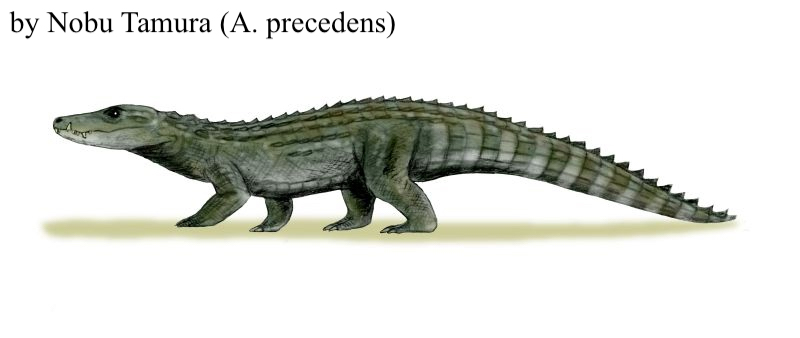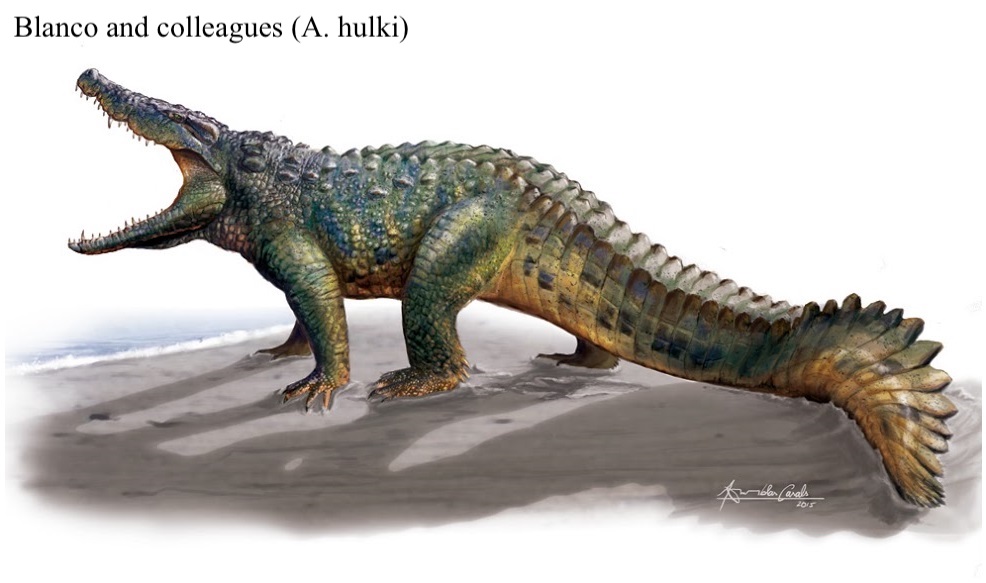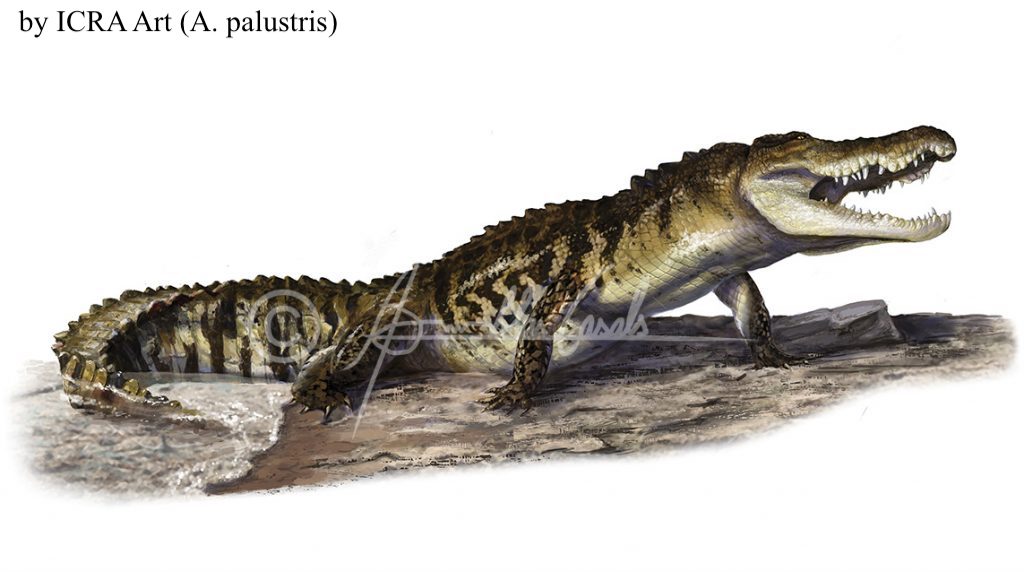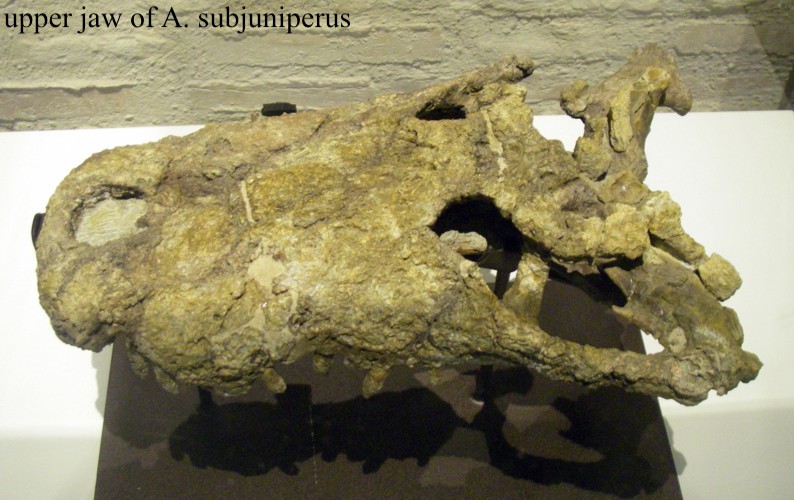Welcome to Allodaposuchus

Name Definition
Different Dapo crocodile
Name Given By
Franz Nopsca in 1928 (A. precedens) | Blanco et al., 2014 (A. palustris) | Blanco et al., 2015 (A. hulki) | A. subjuniperus (authors unavailable, was discovered in 2013)
Location
Vălioara, Romania (A. precedens) ; Conquès Formation in Huesca, Spain (A. subjuniperus) ; Tremp Formation in the southern Pyrenees mountain range between France and Spain (A. palustris & A. hulki)
Classification
Reptilia, Mesoeucrocodylia, Metasuchia, Neosuchia, Allodaposuchidae
Size
largest specimen estimated to be about 1.4 (4.5 ft) meters tall, 3 meters long (9.8 ft)
Temporal Range
Campanian - Maastrichtian stage of the late Cretaceous, about 85 - 66 million years ago
Ecological niche
medium-sized semi-aquatic piscivore/carnivore
Species/Sub Species
A. precedens (type species), A. hulki, A. subjuniperus, A. palustris, Allodaposuchus sp.(the unspecified species is thought to be represented by the French and Spanish fossils of A. precedens)
Diet
small animals like lizards, mammals, and fish as well as small ornithopods
Introduction
Allodaposuchus is a genus of extinct crocodyliforms that lived in southern Europe and Romania during the late Cretaceous. A. hulki was named after Hulk in the Marvel Avengers Series, in reference to the strong muscle attachments that are thought to have been present in the forelimbs of A. hulki. A. subjuniperus was named after its skull was found tangled in the roots of a juniper tree, hence the name subjuniperus which means “under juniper” in Latin. Allodaposuchus palustris was most likely named after its swampy environment in the Tremp Formation since “palustris” means swampy in Latin. It is also the first species of Allodaposuchus to provide a decent description of the postcrania. Of course, while the oxygen levels were much higher during the Mesozoic which caused the dinosaurs and other reptiles to reach great sizes, Allodaposuchus was quite small compared to other crocodilians/crocodyliforms such as Sarcosuchus or Deinosuchus, though it was still a deadly predator to the smaller animals in its ecosystem, and would have had to use ambushing tactics to hunt agile prey like small ornithopods, similar to how crocodiles hunt prey today like zebras and antelope by remaining close but not completely revealing itself in the water, then striking when the prey least expect it. Given its rather small size for a Mesozoic crocodyliform, it may have also scavenged off of kills from larger predators in its ecosystem. Allodaposuchus precedens lived in the Hateg Basin of Romania, so of course it would run into a large number of dwarf dinosaurs which some of them it was capable of overpowering. Even though there would be less resources on the island as it was cut off from the mainland, cold-blooded animals like crocodiles and other reptiles can move to areas with a lower temperature, causing their metabolism and other chemical reactions occurring in their body to slow down, and a slower metabolic rate means less calories burned, allowing Allodaposuchus to store more fat in its body which means it doesn’t require as much food. Given this as well as the dwarf animals, the Allodaposuchus individuals living in Hateg Basin would have had a higher trophic level in the food chain rather than the ones in the mainland. While most species of Allodaposuchus would have balanced out their life in water and on land, the species A. hulki had adaptations that would have allowed it to live on land for extended periods of time. A. hulki had large sinuses in its skull that haven’t been seen in any other crocodilians, and these sinuses would have aided its hearing above water as well as lightening its skull, giving it less weight to carry. A hulki would have also had strong and well-developed muscle attachments located on some major forelimb bones such as the humerus and ulna, allowing it to hold itself in a semi-erect posture which is seen in most crocodilians today.


